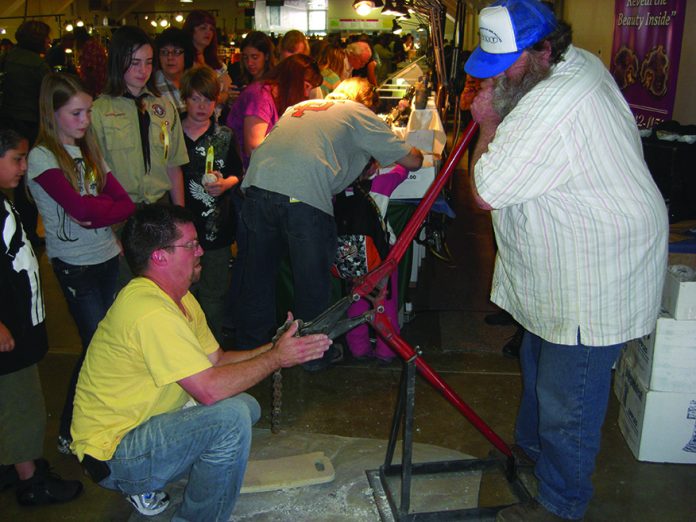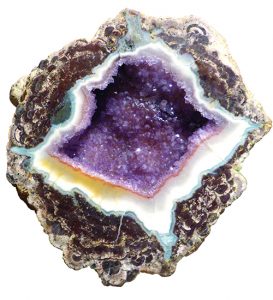
By Jim Brace-Thompson
With geodes, it’s the surprise inside that counts! Most geodes are dull, lumpy and drab on the outside. But inside can be sparkling quartz or calcite crystals, purple amethyst, baby blue celestite, botryoidal chalcedony in varied colors and hues, and more. Sometimes, as an added bonus, the rim is composed of banded agate. Two basic techniques enable you to reveal these surprises inside: cracking or sawing.
Growing up in Illinois, I found geodes on the border with Iowa in the Keokuk region. Once home, I whacked away with an ordinary hammer. Unfortunately, this produced mixed results, including piles of a gazillion shattered pieces. No one ever said I was the brightest kid on the block. Still, some people prefer the natural rough edge of a cracked geode.
Cracking Tools

Fortunately, certain tools allow for cracking in a controlled manner that can reliably result in two nice halves; specifically, a pipe-cutting chain tool. A chain similar to a bicycle chain is wrapped around the geode and tightened by a ratchet. The result is a cracked or “popped” geode.
Other people prefer a more “finished” look. Thus, many geodes you see for sale at rock shows have been sawn on a standard lapidary slab saw or trim saw. The rims often are then polished on a flat lap. Whether you saw and polish your geode in this way or “pop” it, this is one lapidary project that is relatively easy to do and that gives you a sparkling reward to add to your collection.
Author: Jim Brace-Thompson
 Founder and overseer of the AFMS Badge Program for kids.
Founder and overseer of the AFMS Badge Program for kids.
He’s also an inductee of the National Rockhound & Lapidary Hall of Fame within the Education Category.















